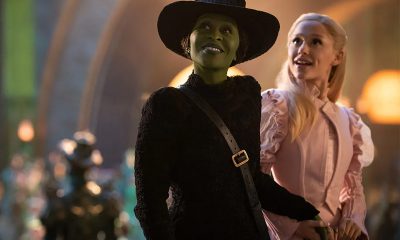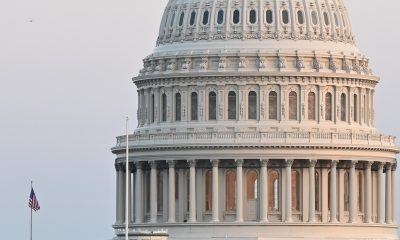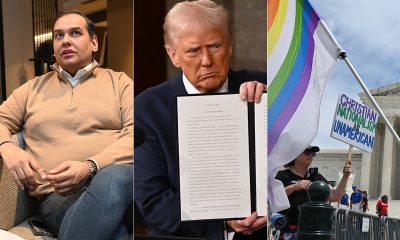Opinions
Johnny Depp, Amber Heard and the deeply unsatisfying matter of re-litigating their trial
The series was panned by critics
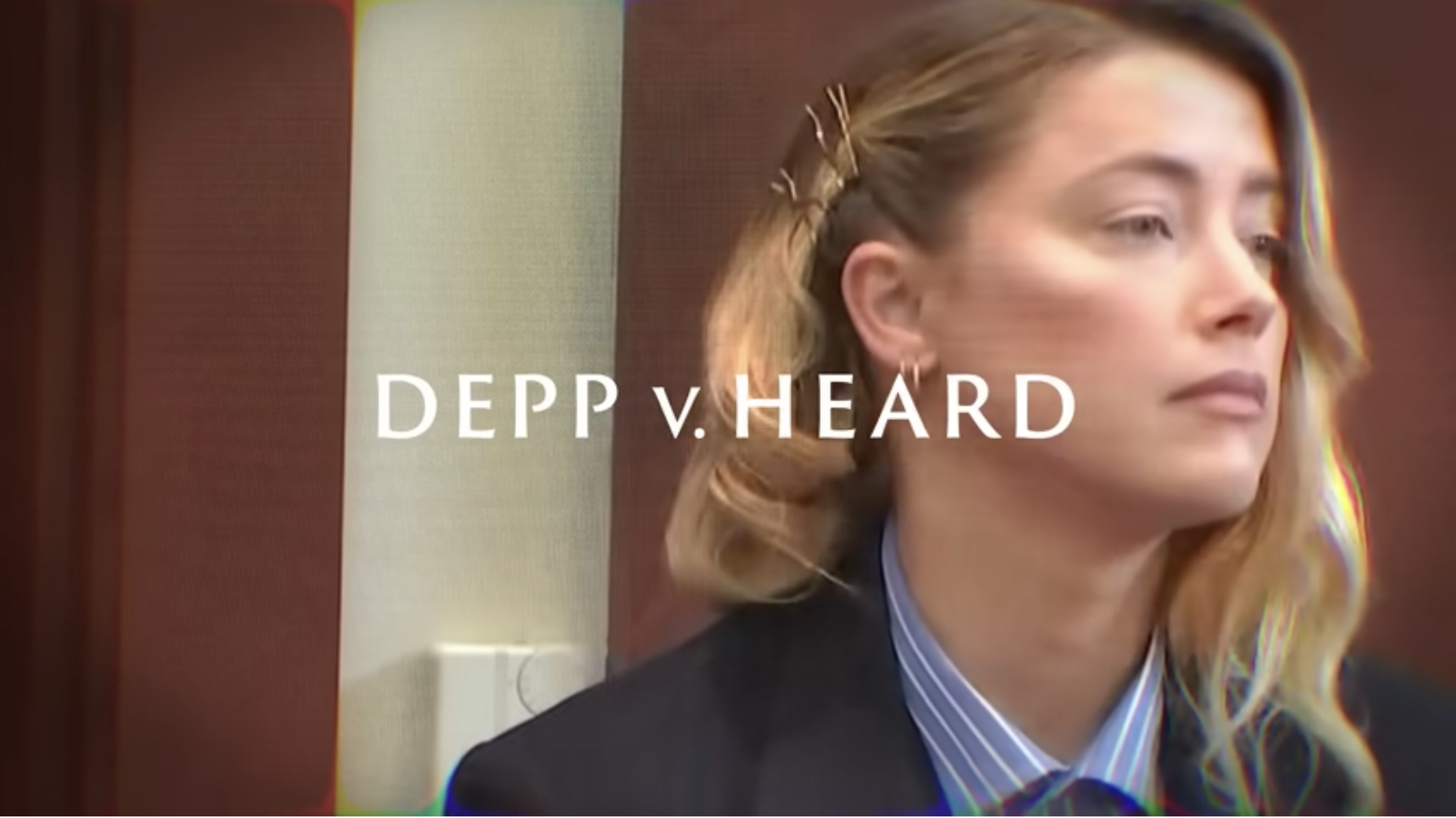
On Aug. 16, Netflix released a three-part docuseries revisiting last summer’s televised civil litigation over allegations that Amber Heard had defamed ex-husband Johnny Depp by claiming to have survived sexual violence and domestic abuse during their four-year relationship.
Rather than offering anything new by way of insight or analysis from anyone with relevant qualifications or experience, each episode features clips from some of the online “creators” who turned their hot takes on the trial into a veritable cottage industry of amateur legal commentary and courtroom conspiracy theories, feeding the rapacious demand for anti-Heard and pro-Depp content. (As if to underscore the project’s unseriousness, these included a men’s rights YouTuber who wore a Deadpool mask and was surrounded by Spider-Man costumes.)
Worse still, “Depp v. Heard” director Emma Cooper fails not only to answer but also to even ask the obvious questions that have lingered since a verdict was returned more than 14 months ago by seven jurors in northern Virginia who were not sequestered as the case became, by far, the most popular topic on social media and online platforms.
At the same time, however, the episodes include footage of courtroom testimony that offer a glimpse, though incomplete, into some of the trial’s more salient and dispositive moments that I otherwise would never have seen (with neither the time nor the inclination, either last year or now, to follow 120+ hours of argument by the parties presented over the course of a seven-week trial.)
Do these scenes redeem the series? Hardly. But that does not mean they offer nothing of value, especially considering that while this was not the retelling of last summer’s events that we deserve, it remains the only one we’ve got. At least, for now.
Susan Sontag, in her 1977 collection of essays “On Photography,” proclaimed “The camera makes everyone a tourist in other people’s reality, and eventually in one’s own.”
In “Depp v. Heard,” the cameras facilitate a very specific kind of tourism that feels both exploitative and voyeuristic, because the reality in which we find ourselves trespassing is dark: the unraveling of a relationship between movie stars through patterns of dysfunction and abuse both familiar and alien, knowable and unknowable, like a city you have visited but never called home.
Especially when coupled with the more outrageous moments from trial that made headlines at the time – such as the debate over whether Heard defecated on Depp’s bed and blamed his teacup Yorkshire Terrier – there is a temptation to treat footage of testimony concerning the smashing of liquor bottles and hurling of wine glasses, the shoving and taunting and threats, even the physical and sexual violence, as though it were pure spectacle.
However, this would suggest, wrongly, that the painful realities of the actors’ relationship are so far removed from our lived experiences that we do not, cannot, or should not relate to them. As if a seven-week trial adjudicating the conflicts in our own intimate relationships or those involving the people we love would not turn up evidence of trouble and dysfunction, or worse.
Considering that we are primed to pick winners and losers and heroes and villains, perhaps it was unsurprising that incomplete and selectively edited footage from the case provided ample fodder for Instagram reels and TikTok videos that were created in the service of narratives that, most often, favored Depp and vilified Heard.
For me, witnessing these scenes in their proper context revealed a picture so much more complicated and, frankly, ugly that the prospect of framing the case in this manner seemed as preposterous as the idea that audiences leaving a production of “Who’s Afraid of Virginia Woolf” should find themselves allied with either Martha or George.
To take just one example: From the witness stand, Heard recounted how she would often return home to their shared Los Angeles penthouse to find Depp nodding off in a chair because he had washed Roxicodone down with whiskey, or lying supine on the sofa fully unconscious with melted ice cream pooled in his lap. Worried about her husband’s apparent substance use disorder and unsure how best to help, the actress admitted she would sometimes take photos of him and share the pictures with a trusted friend.
Or, Depp’s attorney asked, was she just trying to humiliate him? Or, online commentators asked (often rhetorically), was this a calculated and premeditated move to collect evidence she would use against Depp in litigation or for purposes of extorting him?
As if these motives are mutually exclusive.
Having experienced the pain of watching loved ones spiraling in the throes of drug and alcohol addiction, I can tell you why I suspect Heard took the photos, but of course the reality is neither I nor anyone else – perhaps not even she – has any clue.
Last year, so much of the online noise about the trial came from content creators who made specious arguments to poke holes in the credibility of Heard’s testimony or alleged ulterior, sinister hidden motives based on the actress’s countenance, demeanor, speech, and other behavior.
For example, in clips that were often selectively edited or presented outside of their proper context, Heard might have seemed to cry more hysterically upon realizing the cameras were trained on her, which were used as supposed proof that her claims of suffering abuse at the hands of her ex-husband must therefore be fabricated.
Watching the footage in the manner presented on screen in “Depp v. Heard,” it becomes even more obvious how silly these interpretations were. In reality, of course, no one – not even police officers, trial court judges, F.B.I. and C.I.A. agents, trial lawyers or forensic psychiatrists – can reliably spot when someone is lying to them.
However convincing some YouTuber may have been, and however comforting the idea that we are able to see through the lies of others, I’m sorry to tell you the research on this is overwhelming and uncontested.
As Malcolm Gladwell observes in “Talking to Strangers,” Amanda Knox was falsely convicted for a murder she did not commit because “much of the prosecution’s case…rested on the allegedly strange, guilty behavior she exhibited,” which “the public deemed not in line with typical responses to grief and trauma.”
The cameras did not tell the complete story.
Well before 2022, private details about Depp and Heard’s troubled relationship had spilled onto the pages of tabloids like The Sun, which called Depp a “wife beater” in a 2018 story alleging that “overwhelming evidence was filed to show Johnny Depp engaged in domestic violence against his wife.” After he sued the paper for defamation, London’s High Court of Justice ruled against the actor in 2020, concluding the claims at issue were “substantially true.”
Still, last summer’s litigation between the actors earned far more public attention and unearthed far more (and far more titillating) private information, causing, therefore, far more damage than the supermarket rags and gossip blogs – as well as, ironically, the financial and reputational damage resulting from the very defamation claims that were adjudicated at trial.
As a reminder, Depp sued his ex-wife for a 2018 opinion article in the Washington Post in which she had written, “two years ago, I became a public figure representing domestic abuse, and I felt the full force of our culture’s wrath for women who speak out.” Heard was referencing the backlash against, essentially, identical claims she made in a statement after securing a restraining order against Depp following their divorce in 2016. (“During the entirety of our relationship, Johnny has been verbally and physically abusive to me,” she wrote.)
In so many cases including this one, intimate partner abuse is messy. An audio recording of one of the couple’s arguments shows Heard acknowledging she had struck her ex-husband but denying that she punched him. Her testimony, meanwhile, detailed serious violent crimes, including that Depp had thrown her into a ping pong table and repeatedly hit her in the face before sexually assaulting her with a liquor bottle that may have been broken.
Of course, assuming their sworn testimony to be true, it must also be said, domestic violence is a gendered crime. And the imbalanced power dynamics within their relationship put Heard at a disadvantage, including in this respect. While both are famous actors, the wealth, power, and fame wielded by Depp was then (and remains, now) much greater.
The disparity was evident from the outset. In the Netflix series, throngs of fans are shown cheering the Pirates of the Caribbean star and booing Heard on the first day they were sighted arriving separately to the Fairfax County Circuit Court. Meanwhile, online, evidence of a sustained and coordinated character assassination of Heard had just begun to emerge.
The smear campaign would persist through the trial and beyond. The actress was called a manipulative liar, a gold digger, an abuser, a violent psychopath, a drug addict, and worse. Some of the most outrageous claims were among the most widely circulated: She snorted cocaine on the witness stand, killed her own mother to conceal testimony that would have exonerated Depp, plagiarized lines from the film The Talented Mr. Ripley.
Creators mocked Heard by lip-synching over audio of her testimony about suffering violent abuse in videos that went viral on TikTok along with hashtags like #JusticeForJohnnyDepp, which was seen nearly 3 billion times on the platform. (#justiceforamberheard earned just 25 million views.) One-sided articles and videos, many containing false and misleading claims, were promoted by Ben Shapiro’s conservative media outlet The Daily Wire through its estimated $35,000 and $47,000 purchase of Facebook and Instagram ads.
“Depp v. Heard” was panned by critics.
“If ever a true-crime documentary needed the usual collection of talking-head interviews with esteemed journalists, law enforcement veterans and legal experts to put things in perspective,” Richard Roeper of the Chicago Sun Times wrote, “this is it — but that never happens.”
Others, like CNN’s Brian Lowry, agreed: “How much is gained from listening to a guy in a Deadpool mask offering extensive trial takes is a question ‘Depp v. Heard’ should have contemplated and apparently didn’t,” he wrote.
Several reviews added that part of the problem was that not nearly enough time had elapsed between the events and their retelling. Bustle’s Scaachi Koul pointed to other recent projects involving the private lives of public figures (especially women) that, with sufficient space and distance, found new and interesting things to say about their subjects and opportunities to tell their stories anew.
Ryan White’s excellent documentary “Pamela: A Love Story,” which was released by Netflix in January, manages to find plenty of material about actress and model Pamela Anderson along with the broader sociocultural forces of the 90s and early aughts that helped shape – and were shaped by – the era’s most enduring sex symbol.
The film would have been nothing, however, without Anderson. Listening to her tell her own story, one realizes how poorly suited everyone else was to the task – particularly the leering talk show hosts and journalists who treated her as nothing more than a sex object.
And maybe that, above all else, is the lesson to be gleaned from “Depp v. Heard”: Let’s come back to this story, sure, when we’re ready to cut through the bullshit, reframe the conversation away from the “him vs. her” framing, stop relying on provably unreliable evidence, and consider the broader context of their relationship and the impact of the trial that happened on TikTok and YouTube. And let’s definitely listen to Heard if and when she’s ready to talk about this again.
Until we get that docuseries (or documentary, scripted series, film, book, whatever), I fear everything else will be deeply unsatisfactory and unsatisfying.
Opinions
A dangerous precedent on trans rights in Texas
State compiling list of those who have updated gender on driver’s licenses
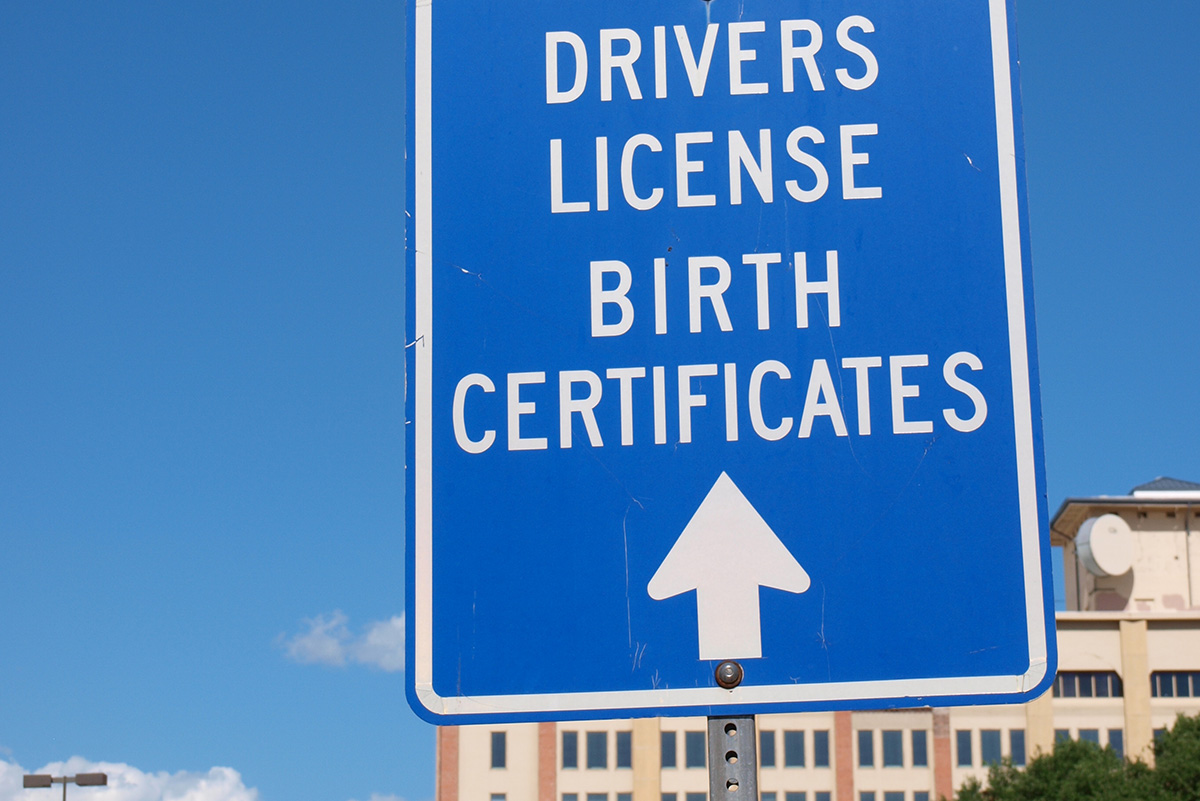
Recent reporting from Texas Standard revealed what should alarm every American who values privacy, civil rights, and constitutional restraint: the state of Texas is compiling a list of transgender residents who have attempted to update the gender marker on their driver’s licenses.
Under a policy quietly implemented after August 2024, the Texas Department of Public Safety stopped accepting court orders or amended birth certificates as valid documentation for gender marker changes. Instead, DPS employees were instructed to forward the names and identifying information of applicants seeking such updates to a dedicated internal email channel labeled “Sex Change Court Order.” Those records, which include sensitive personal information, are now being collected internally by the state.
Texas officials have not offered a clear explanation for why this information is being gathered, how long it will be retained, or what it will ultimately be used for. That lack of transparency is deeply troubling on its own. But in the broader context of Texas’s recent legislative trajectory on transgender rights, the implications are far more serious. This is not merely a bureaucratic shift. It is the creation of a targeted registry of transgender people.
The discriminatory nature of this practice is difficult to ignore. Governments are generally prohibited from singling out individuals based on protected characteristics for special monitoring or record-keeping. Since the Supreme Court’s decision in Bostock v. Clayton County, discrimination against transgender people has been understood as a form of sex discrimination under federal law. Compiling a list of people solely because they sought to align their identification documents with their gender identity runs directly counter to that principle.
Even states with restrictive policies around gender marker changes have historically focused on procedural barriers rather than surveillance. Texas has crossed a new threshold by moving from denial to documentation. The state is no longer just refusing recognition; it is actively cataloging those who seek it.
This practice also represents a profound violation of privacy. Driver’s license records contain some of the most sensitive personal data the government holds. Associating that data with a person’s transgender status without consent or statutory justification creates obvious risks, particularly in a political environment where transgender people are already subject to heightened hostility.
The chilling effect is unavoidable. Trans Texans will now have to weigh whether engaging with basic state services could land them on a government list. That fear will discourage people from updating identification, interacting with public agencies, or asserting their legal rights at all. When a government’s actions deter a specific population from participating in civic life, the harm extends well beyond administrative inconvenience.
What makes this development especially dangerous is how neatly it fits into a broader pattern. Texas lawmakers have spent years advancing legislation that narrows the legal definition of sex, restricts access to gender-affirming care, and limits the recognition of transgender people across public institutions. The creation of this list does not stand apart from those efforts; it complements them.
Once such a database exists, it becomes a tool. Data collected today for “administrative review” can be used tomorrow to justify new exclusions, enhanced scrutiny, or punitive enforcement. History shows that registries built around identity rarely remain benign. They become mechanisms of control.
Other states are watching. Texas has increasingly functioned as a testing ground for anti-trans policy, with lawmakers elsewhere ready to replicate measures that survive legal or political backlash. If compiling a list of transgender residents becomes normalized in Texas, it will not remain isolated. Red states searching for new ways to restrict trans lives will take notice.
The constitutional issues raised by this practice are significant. The Equal Protection Clause forbids states from treating similarly situated individuals differently without sufficient justification. Singling out transgender people for special tracking invites heightened scrutiny. There are also serious Fourth Amendment concerns when the government collects and retains sensitive personal information without a clear, lawful purpose.
At stake is not just the safety of transgender Texans, but the integrity of government itself. If states are permitted to quietly assemble lists of disfavored populations, the precedent does not stop with gender identity. It becomes easier to rationalize similar measures against other groups, under different political conditions.
This moment demands scrutiny and resistance. Texas must be compelled to explain why this data is being collected, how it will be protected, and whether it will be shared across agencies. Civil rights organizations and federal authorities should treat this practice as a serious warning sign, not a minor administrative quirk.
The United States has made meaningful progress toward recognizing the rights and dignity of transgender people, but that progress is fragile. It can be reversed not only through sweeping legislation, but through quiet bureaucratic maneuvers that evade public attention.
A list of transgender citizens is not a neutral administrative artifact. It is a signal. It tells a vulnerable population that their government is watching them differently, recording them differently, and preparing to treat them differently. That should concern everyone, regardless of where they live.
If we allow this to stand, Texas will not be the last state to do it.
Isaac Amend is a writer based in the D.C. area. He is a transgender man and was featured in National Geographic’s ‘Gender Revolution’ documentary. He serves on the board of the LGBT Democrats of Virginia. Contact him on Instagram at @isaacamend
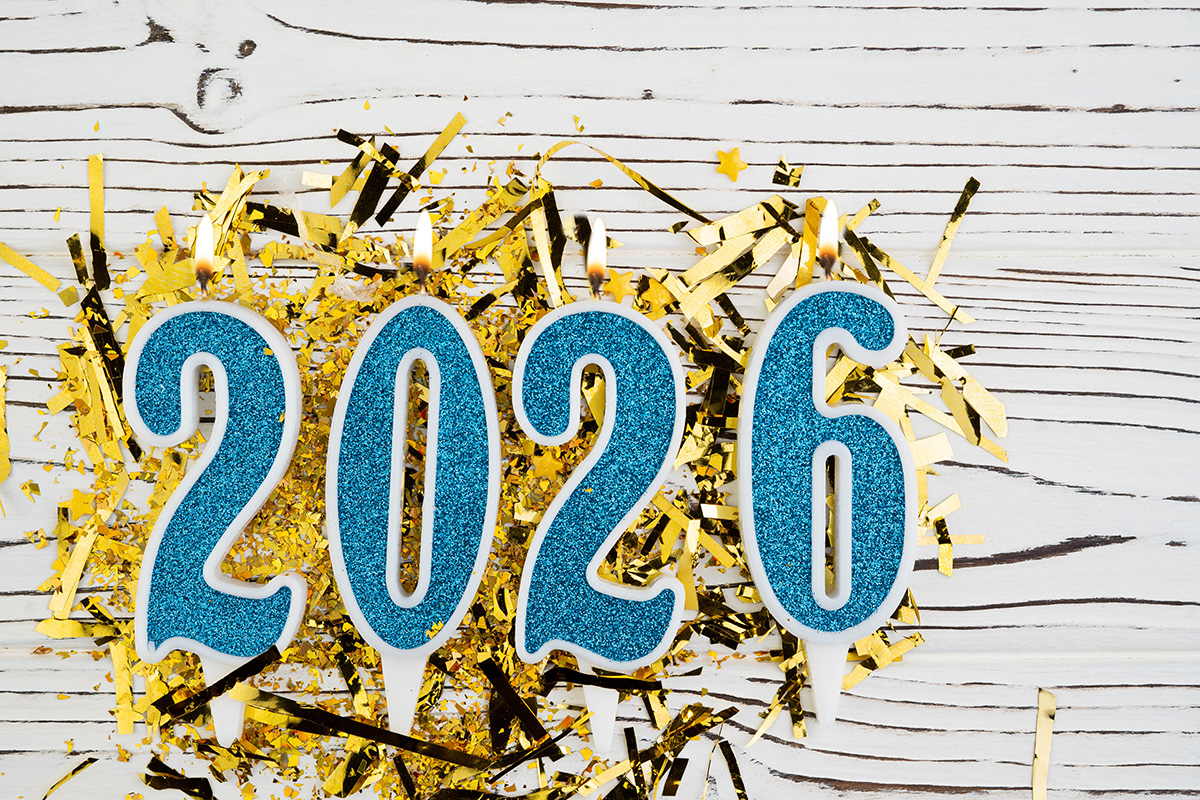
One year gone, another just beginning. The best of all worlds would be no regrets about how you lived your life in 2025, and a positive outlook for 2026. I wish that for all of you, along with good health and happiness.
For me, 2025 was a good year. No new health issues as long as I don’t consider my recent root canal. Friends kidded if that was my worst, life is OK. But then they didn’t sit in the dentist chair for three hours. As you are aware, if reading this in the Blade, I write about politics. The felon in the White House ensures there is always something to write about. Unfortunately, it’s 99% bad. He recently said he will interfere in Europe, and support far-right parties. Not surprising for him, and his fascist leaning administration. Again, as you know, I usually refer to him as ‘The felon,’ my most polite name for him. He has a slew of scary incompetents around him, but truly frightening are the fascists like Russell Vought at OMB who wrote Project 2025, and his personal Goebbels, Stephen Miller. They are proposing policies that are destroying lives. While many don’t impact me, they create a certain amount of guilt in how I live my life. I am a white, privileged, cisgender, older, male and can escape the immediate repercussions of some of the worst things happening in the world today. Nearly all perpetrated, or supported, by the evil SOB in the White House. There, another name for him.
As long as my Social Security keeps coming, and Medicare still pays 80% of my doctor bills, I should be OK. In 2025, I continued to join friends every morning for coffee. In D.C. at Java House; in Rehoboth Beach, it’s The Coffee Mill, owned by my good friends Mel Damascena and Bob Cartwright.
My regular column allows me to vent and comment on the world. My second column is the Blade’s Comings & Goings column. It lets me share the successes of so many in the LGBTQ community. We have a truly amazing community, of which I am so proud to be a part. In 2025, I also began my second book, this one on politics, but don’t hold your breath for a publication date. I am also a theater reviewer for the Georgetown Dish. I get to see as many plays as I like, and share thoughts about them. Mind you, I call myself a reviewer, not a critic. I always try to find something nice to say about every production, even if I don’t recommend others see it. Maybe a good actor, great scenic designer, always something good even in a bad production.
I am fortunate to continue to travel. Now it’s on cruise ships. Great to unpack once, and know where the bathroom is. This past year I went on two cruises, and the Blade was kind enough to publish my blogs. One, a bucket list cruise, something I wanted to do for over 40 years, to the Norwegian Fjords, and the Arctic. Twelve days on Celebrity APEX out of Southampton. It was amazing, and met all my expectations. The second was my recent transatlantic cruise, something I do annually, with a large group of friends from around the country, and world. It was 13 nights from Rome to Ft. Lauderdale. I’ve already booked next October; 16 nights on Celebrity XCEL, Barcelona to Miami. I even have two cruises booked in 2027, one a transatlantic, the other a river cruise on the Douro, in Portugal. Feel free to join me if you like cruising, at least the kind done on the water.
All-in-all, 2025 was a good year. I look forward to the same in 2026. More travel, including a barge trip in June from Lyon to Paris, through the canals of Burgundy. I hope for good health, time with good friends, and more writing. In addition, I promise my friends, and community, I will continue to fight with, and for you, trying to make our lives better. I will demonstrate against the felon and his policies, work hard to elect Democrats, especially my friend Zach Wahls, running for United States Senate in Iowa. I will stand up, and speak out, for my trans friends, and friends who are immigrants, all threatened by the felon.
I ask you to join me and do everything we can to take back our country and look forward to maybe seeing many of you on a cruise, but definitely on the battle lines, here at home. Together, we can work in 2026 and beyond, to ensure everyone can live the life they want, and deserve; in what again must be the land of the free and home of the brave.
Peter Rosenstein is a longtime LGBTQ rights and Democratic Party activist.
Opinions
Trump’s ‘American people derangement syndrome’
Voters must stop him before he destroys democracy

Trump, in a deranged, evil, post on X, accused Rob Reiner of suffering from “Trump derangement syndrome.” I guess that would apply to everyone who thinks Trump is an evil, dangerous, asshole who is trying to destroy our society as we know it. With that definition, I would surmise the felon himself suffers from “American people derangement syndrome,” because clearly, he thinks we are all evil, dumb, assholes, and a danger to him, and the fascists surrounding him.
His speech to the nation was called bellicose, by the New York Times. I would call it unhinged and vile. It was a plea to the populace, containing a pack of lies, to continue to believe his lies, and distortions. We all know the felon is full of shit when telling us prices have come down. We go shopping every week to feed ourselves and our families, even if he doesn’t. We have to pay heating and rent bills each month. We know since he became president nearly a year ago, all those costs have gone up. Talk to any honest person at a chamber of commerce in your area, and they will tell you small businesses are suffering. They will tell you the felon’s tariffs are hurting everyone. We know he is screwing the poor and middle class; trying to end SNAP benefits, and refusing to help with healthcare costs. All the while giving tax breaks to corporations, and the rich. People are not dumb Mr. Felon, and your lies are no longer resonating.
The evil, deranged, felon in the White House lives in a world where he can do favors for his friends in return for getting them to donate hundreds of millions for his follies. He is a grifter who hosts dinners for rich people to make money for his crypto business. He is said to have made more than $3 billon since his election. This while farmers are going broke, and losing their farms, because his tariffs screwed them. He is undermining vaccines and caused a measles epidemic in the United States. This a disease eradicated before he came into office. He ended grants to research cures for HIV/AIDS, Parkinson’s, Alzheimer’s, cancer, and an assortment of childhood diseases. He stopped research grants for mRNA vaccines. When we have the next pandemic, and it will come, that will result in millions of deaths, all on his head.
He is embarrassing the United States around the world. They watch him give unhinged speeches, raise and lower tariffs irrationally, screw our allies, and now trying to interfere in their elections. He is bombing fishing boats, claiming they are carrying drugs, with no proof at all. Then he releases from prison the man who brought more cocaine into the country than anyone else ever did. All this is what the lying, cheating, grifting, evil, heartless, felon in the White House, is doing to you, the good people of the United States, and the world. He sounds more unhinged every day while trying to blame everything on former President Biden and Democrats, who haven’t controlled the levers of government in nearly a year.
I know the results of the 2025 elections must scare him. They show him the majority no longer accept his BS. We will go into 2026, and the midterm elections, with our eyes wide open. He wants to be King and we don’t want kings in our country. He has what his chief of staff calls, “an alcoholic’s personality” “because he believes there’s nothing he can’t do.” She is right about that, but we will call him on it in the next election. We will say clearly, with our voices, and our votes, “no more, enough is enough.” We are taking back the country and will throw out anyone in office who still supports him.
We try and forgive those who voted for him, as long as they now recognize he lied to them, and is screwing them. Young people must understand they will suffer their whole lives because he is a climate denier. Latino and Hispanic voters, who believed he was going to support them, now see he wants to deport them. Farmers who once thought he supported them, until he screwed them. We must now all join together, and show the evil SOB in the White House, who is building his grand ballroom, taking planes, and other gifts, and pardoning the guilty; his time is coming to an end. Again, we will go into the voting booth, eyes wide open, and vote to stop him before he completely destroys our lives, our families, our democracy, and brings fascism to our country.
Peter Rosenstein is a longtime LGBTQ rights and Democratic Party activist.



